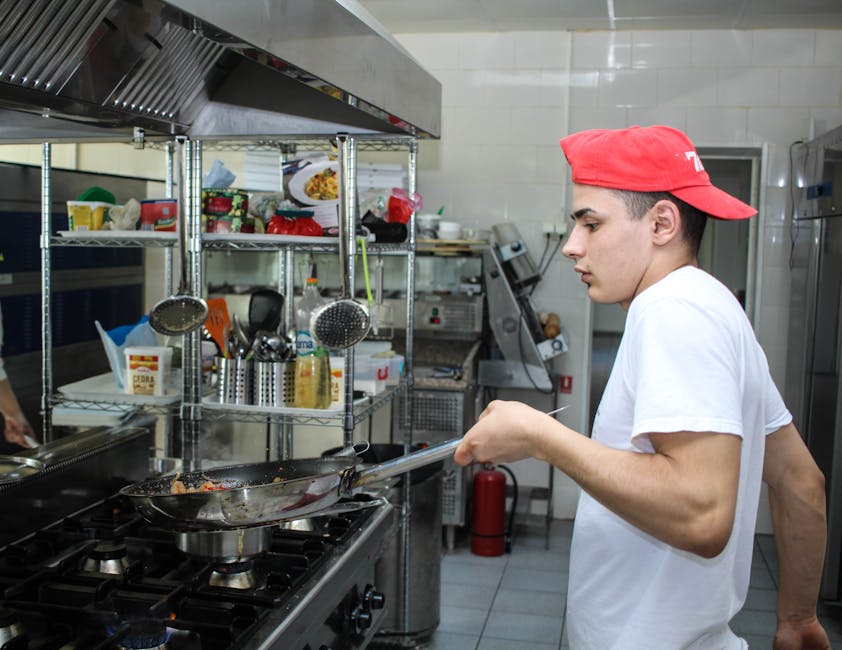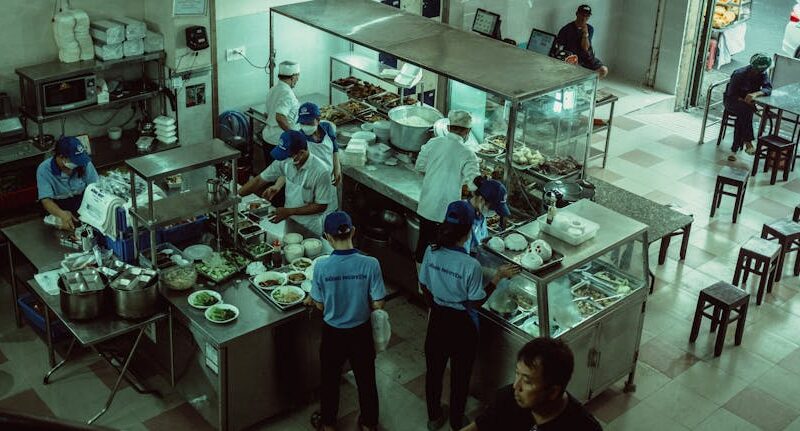The Importance of Hygiene in Restaurants
When we step into a restaurant, we expect not only a delightful culinary experience but also a clean and hygienic environment. The significance of hygiene in restaurants cannot be overstated it is not just a matter of aesthetics or comfort, but a crucial factor that directly impacts the health and well-being of customers and staff alike. From food preparation to storage, cleanliness plays a pivotal role in ensuring the overall safety and quality of the dining experience. In this article, we will delve into the various aspects of hygiene in restaurants, exploring its importance, challenges, and best practices.
The Impact of Poor Hygiene on Health

Poor hygiene practices in restaurants can have severe consequences on public health. Contaminated food can lead to foodborne illnesses such as salmonella, E. coli, and norovirus, causing symptoms ranging from mild discomfort to life-threatening conditions. According to the Centers for Disease Control and Prevention (CDC), foodborne illnesses affect millions of people each year, resulting in hospitalizations and even fatalities.
One notable case that highlights the dangers of poor hygiene in restaurants is the Chipotle Mexican Grill outbreak of 2015. The fast-food chain faced a widespread E. coli outbreak that affected multiple states, leading to dozens of reported illnesses. The incident not only tarnished the company’s reputation but also underscored the importance of strict hygiene protocols in the food industry.
Regulatory Standards for Hygiene in Restaurants

To mitigate the risks associated with poor hygiene, regulatory bodies such as the Food and Drug Administration (FDA) and the Environmental Protection Agency (EPA) have established stringent guidelines for restaurants to follow. These regulations cover various aspects of food handling, storage, and cleanliness to ensure the safety of the public.
For instance, the FDA’s Food Code outlines specific requirements for restaurant kitchens, including proper handwashing procedures, temperature control for food storage, and sanitation of equipment and utensils. Failure to comply with these standards can result in fines, closures, and legal repercussions for restaurant owners.
Best Practices for Maintaining Hygiene in Restaurants

Ensuring hygiene in restaurants requires a comprehensive approach that involves both management and staff. Here are some best practices to uphold cleanliness and food safety:
1. Regular Handwashing

Handwashing is one of the most basic yet critical practices in maintaining hygiene in restaurants. Proper handwashing techniques, using soap and water, can prevent the spread of harmful bacteria and viruses. All restaurant staff should be trained on when and how to wash their hands to minimize the risk of contamination.
2. Sanitizing Surfaces and Equipment
Surfaces and equipment in a restaurant kitchen can harbor pathogens if not properly cleaned and sanitized. Regularly disinfecting countertops, cutting boards, and cooking utensils can prevent cross-contamination and ensure the safety of food preparation.
3. Temperature Control
Temperature control is crucial for preventing the growth of bacteria in perishable foods. Restaurants should adhere to specific temperature guidelines for storing and cooking different types of food to minimize the risk of foodborne illnesses.
4. Proper Food Handling
Improper food handling practices, such as using the same cutting board for raw meat and vegetables, can lead to contamination. Training restaurant staff on safe food handling practices, including proper storage, thawing, and cooking techniques, is essential for maintaining hygiene standards.
5. Pest Control
Pests such as rodents and insects pose a significant threat to hygiene in restaurants. Implementing effective pest control measures, such as regular inspections and proper waste management, can prevent infestations and protect the integrity of the establishment.
The Role of Technology in Ensuring Hygiene
Advancements in technology have revolutionized the way restaurants approach hygiene and cleanliness. From automated kitchen equipment to digital monitoring systems, technology offers innovative solutions to enhance food safety and efficiency.
One notable example is the use of temperature monitoring devices in refrigeration units. These devices can provide real-time alerts to restaurant staff if temperatures fall outside the safe range, enabling quick intervention to prevent food spoilage and contamination.
Common Misconceptions About Hygiene in Restaurants
Despite the importance of hygiene in restaurants, there are several common misconceptions that can undermine efforts to maintain cleanliness. One prevalent misconception is that visual cleanliness equates to hygienic practices. While a clean appearance is essential, it does not guarantee that proper hygiene protocols are being followed.
Another misconception is that only the kitchen staff are responsible for hygiene in restaurants. In reality, every employee, from servers to managers, plays a role in upholding cleanliness standards and ensuring the safety of customers.
Conclusion
In conclusion, the importance of hygiene in restaurants cannot be overstated. From preventing foodborne illnesses to upholding the reputation of the establishment, cleanliness plays a crucial role in the success of a restaurant. By adhering to regulatory standards, implementing best practices, and leveraging technology, restaurants can create a safe and inviting environment for customers. As consumers, it is essential to prioritize hygiene when dining out and support restaurants that prioritize cleanliness and food safety.




